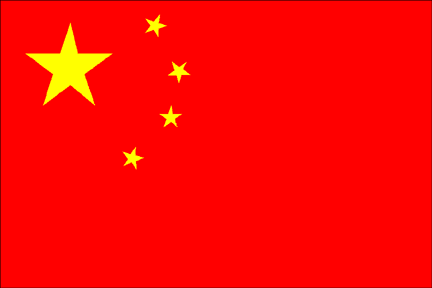





The first photographic evidence of CSS-2 training was obtained by US intelligence in November 1970. This training was conducted at Wuwei is continuing at this time. Live firings of this missile were conducted from a launch facility at Wuchai, southwest of Peking, and possibly represented training exercises beginning in mid-1969. It is probable that China deployed a small number of DF-3 IRBMs beginning in late 1971. Though no firm evidence of such deployments was available at the time, 1972 imagery indicated the probably imminent deployment at two separate locations in China. This second generation Chinese missile improved both range and reaction time. As a silo-deployed missile, the DF-3 rocket would be prefueled, providing much quicker reaction time than the DF-2.
The DF-3 provided the first stage for the follow-on CSS-3/DF-4 IRBM.
It also provided the first stage of China's first space launch vehicle, dubbed CSL-1 in the West and Changzheng 1 (CZ-I) or Long March 1 by the Chinese. The space booster developed from the DF-3 launched China's first two successful space satellites. In April 1970, the three-stage CZ-1 launched China's first successful space satellite. The first two stages used liquid fuel, the third stage solid propellant. The CZ-1 also launched a satellite in March 1971 the last until 1975, when a new series was begun.
There are at least two versions of the DF-3. The initial model had a range of about 2,650 kilometers and carried a single nuclear warhead weighing 2,150 kilograms. During 1983 and 1984 a range extension program on the DF-3 increased the range of the DF-3 to 2,800 km [some sources report the range as up to 4,000 kilometers]. In addition, according to some reports the missiles were modified to carry three nuclear warheads, all probably in the 50-100 kT range, though lower yields have been suggested. Of a total of some 100 DF-3 missiles, about 80 are of the improved DF-3A version which was deployed beginning in 1986.The DF-3 normally has a range of 2,780 kilometers, with a maximum altitude of 550 kilometers. With depressed trajectory, the DF-3 travels 1,550 kilometers at 100 kilometers altitude.
In 1987 China sold several dozen (reportedly between 36 and 60) outmoded DF-3 missiles to Saudi Arabia, minus their nuclear warheads.An estimated 90-120 DF-3s were deployed in the 1980s, and some greater number were manufactured. The CSS-2 is China�s primary regional missile system. A road-transportable, liquid-fueled IRBM, it can be launched from either permanent launch pads or from portable launch stands. As of late 1997 China had about 40 DF-3 refire-capable launchers at six field garrisons and launch complexes. Many of those launchers are being converted to handle new, solid-fuel DF-21 [CSS-5 Mod 1] launchers and missiles. The number of CSS-2 sites will likely be reduced, since the United States no longer operates bases in the Philippines, and DF-15 [M-9] short-range missiles deployed along the eastern coast can be used to cover targets in Taiwan. The DF-21 deployments have been limited to areas closer to China's borders to ensure adequate target coverage of areas previously covered by the DF-3. In areas deeper inside China, where longer range is necessary for target coverage, DF-3 activities are relatively high, indicating the missile could remain in service in these regions until new missiles such as the DF-21 [CSS-5 Mod 2] are deployed. Once the DF-21 deployments are adequately under way, the CSS-2 will likely be removed completely from service, perhaps by 2002.
Specifications |
|||
| Contractor | Chinese Academy of Launch Vehicle Technology - CALT | ||
| Operator | Second Artillery Corps | ||
| Basing |
| ||
| First Test | 1966 | ||
| Firings as of 1972 | 14-16 | ||
| IOC | 1971 | ||
| Range (km) | 3,000 - 4,000 | ||
| Throw-weight (kg) | 2,000 | ||
| Yield |
1 @ 700-3000 KT 3 @ 50-100 KT 3 @ 10-20 KT ??? conventional HE | ||
| Propellant | Storable | ||
| Deployment | Soft | ||
| Configuration | Single Stage | ||
| Length [meters] | 24 | ||
| Diameter [meters] | 2.25 | ||
| Mass [kilograms] | 64,000 | ||
| Guidance | Inertial | ||
| CEP (meters) | 1,000 - 4,000 | ||
| Launch Preparation Time | 120-150 minutes | ||
